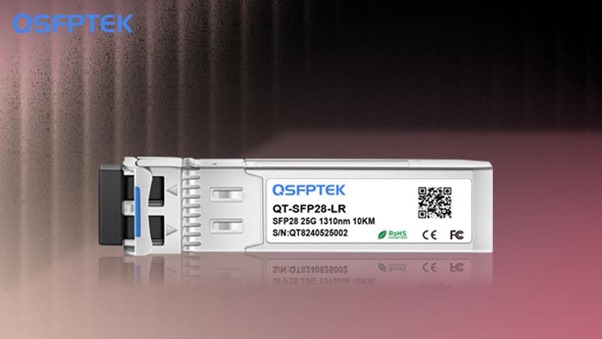As businesses increasingly rely on large volumes of data, the demand for faster, more reliable data storage and retrieval solutions has surged. Storage Area Networks (SANs) have long been a critical infrastructure for handling and storing massive datasets, but as data sizes grow, traditional networking solutions are becoming inadequate. Enter 25G modules—an ideal solution to meet the growing demand for faster, more efficient data transfers within SANs. In this blog, we will explore how 25G modules enhance the performance of SANs and contribute to improving data transfer rates, enabling better storage management and efficiency.
What is a Storage Area Network
A Storage Area Network (SAN) is a high-performance network designed to provide fast, reliable access to data storage devices. Unlike traditional network-attached storage (NAS), which connects storage devices over standard network protocols, SANs use a specialized, high-speed network to provide direct block-level access to storage devices. This configuration enables multiple servers to access storage as if it were locally attached, making it an ideal solution for environments with large data processing needs, such as data centers, cloud platforms, and enterprise IT infrastructures.
However, as the volume of data continues to increase, traditional SAN technologies face challenges in keeping up with the speed and capacity required for modern workloads. This is where 25G modules come into play.
How 25G Modules Enhance SAN Performance
Increased Bandwidth for Faster Data Transfer
One of the most significant advantages of 25G modules is their ability to provide higher bandwidth compared to older generations of network transceivers. Traditional 10G modules have served well for many years, but as data demands increase, 25G modules offer a direct upgrade by delivering 2.5 times the bandwidth. With 25G speeds, SANs can handle larger data sets and support faster read/write operations. This allows businesses to move more data between storage devices and servers without bottlenecks, reducing latency and enhancing overall system performance.
For applications that require real-time access to data, such as virtualization, AI, and machine learning, the high throughput of 25G modules ensures smooth and rapid data retrieval, which is critical for maintaining application performance and operational efficiency.
Optimized Scalability
As data storage needs grow, businesses often need to scale their SAN infrastructure to meet the demand for more storage space and higher throughput. 25G modules provide a scalable solution that allows businesses to upgrade their network infrastructure without completely overhauling their system. By using 25G transceivers, companies can future-proof their SANs, ensuring they can handle increased data volumes without compromising on speed or performance.
Moreover, 25G modules support high-density connections, enabling SANs to accommodate more devices within a limited physical space. This optimizes the use of available network infrastructure and reduces the need for costly expansions.
Efficient Data Management and Faster Storage Retrieval
In SAN environments, the speed at which data is retrieved from storage devices is critical. With 25G modules, organizations can streamline their data management processes by enabling faster access to data stored across multiple devices. The higher data throughput allows SAN systems to support more simultaneous data operations, whether it’s large file transfers, backups, or database queries.
For industries like healthcare, finance, and media production, where access to large datasets is frequent and time-sensitive, the enhanced speed provided by 25G modules translates directly into improved operational efficiency. Faster data retrieval helps reduce downtime, enhance productivity, and enable quicker decision-making.
Improved Storage Efficiency with Lower Latency
The reduced latency offered by 25G transceivers also plays a key role in improving SAN performance. In data-intensive environments, even minor delays can result in inefficiencies and bottlenecks. 25G modules significantly reduce latency in data transfers, ensuring that requests for data are processed faster. This is particularly important in high-performance computing (HPC) environments, where real-time data access is crucial.
With lower latency and higher bandwidth, SANs can better handle complex workloads and manage large-scale data storage systems more efficiently.
Why 25G Modules Are a Smart Investment for Modern SANs
Cost-Effectiveness: 25G transceivers offer a cost-effective solution to meeting growing bandwidth demands. While 100G modules offer even higher speeds, they come at a significantly higher price point. 25G modules strike a balance between performance and cost, providing an upgrade path from 10G modules without the expense of moving directly to 100G.
Energy Efficiency: 25G modules consume less power compared to higher-speed alternatives, such as 100G. This makes them an energy-efficient choice for businesses looking to reduce operating costs and meet sustainability goals. Lower energy consumption also means less heat is generated, leading to reduced cooling requirements in data centers.
Reliability and Compatibility: 25G modules are compatible with existing SAN infrastructure and can be easily integrated into current networking systems. This ensures that organizations can benefit from enhanced performance without requiring a complete overhaul of their network equipment.
Conclusion
In today’s data-driven world, businesses need fast, reliable, and scalable storage solutions to manage the ever-increasing volume of data. 25G modules play a pivotal role in enhancing the performance of Storage Area Networks by providing higher bandwidth, lower latency, and more efficient data management. These modules support faster data transfers, optimize scalability, and improve overall network performance, making them an essential investment for businesses looking to future-proof their SANs.
MORE

